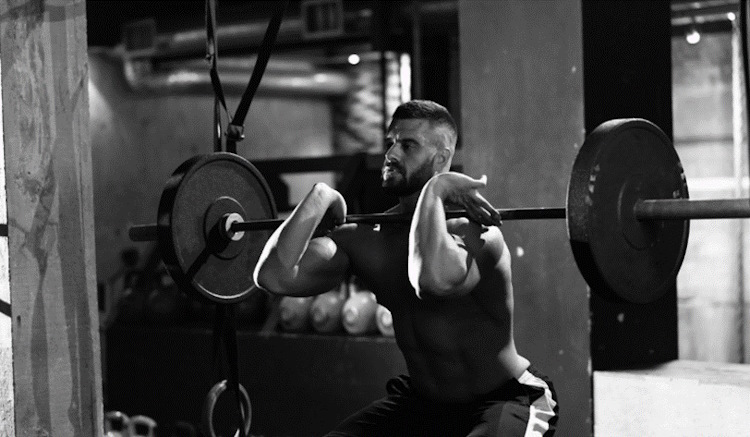The Heavy-Duty training method: extreme growth with lots of rest
The Heavy-Duty training method, pioneered by legendary bodybuilder Mike Mentzer, offers a very unique and intense approach to building muscle. This training philosophy challenges conventional high-volume routines by emphasizing short, high-intensity workouts with extended recovery periods. In this article, we’ll look into the principles of the Heavy-Duty training method, its benefits, how to effectively incorporate it into your bodybuilding regimen for maximum muscle growth, as well as provide a sample full-body routine.
The basis of the Heavy-Duty training method is built on several core principles.
Core principles
High intensity
Each workout focuses on pushing muscles to mechanical failure with maximum effort. The idea is to stimulate muscle fibers as intensely as possible in a short period of time;
Low volume
Unlike traditional routines that involve multiple sets and exercises, Heavy-Duty training typically involves just one or two sets per exercise. The key is to perform these sets with very high intensity, getting close to or to failure;
Progressive overload
The emphasis is on progressively increasing the weight lifted to continuously challenge the muscles and promote growth;
Extended recovery
Adequate rest is crucial for muscle recovery and growth. Heavy-Duty training advocates for longer recovery periods between workouts, often ranging from 4 to 7 days.
Heavy-Duty training offers several benefits for those looking to maximize muscle growth and efficiency in their workouts.
Maximize muscle growth and efficiency
Efficiency
With shorter, high-intensity workouts, Heavy-Duty training is ideal for individuals with limited time. You can achieve significant results without spending hours in the gym. On average, a Heavy-Duty routine takes about 3h of lifting per week;
Enhanced muscle growth
The focus on pushing muscles to failure with maximum intensity effectively stimulates muscle hypertrophy, leading to significant gains;
Improved recovery
Extended recovery periods allow for full muscle recovery and adaptation, reducing the risk of overtraining and injury;
Mental toughness
The intense nature of Heavy-Duty training helps develop mental resilience and focus, qualities essential for long-term success in bodybuilding.
If you want to effectively incorporate Heavy-Duty training into your training, follow these guidelines.
Heavy-Duty training
Warm-up properly
Begin with a thorough warm-up to prepare your muscles and joints for the intense effort. Dynamic stretches and lighter sets of the exercises you plan to perform usually work better than general warm-ups;
Choose compound movements
Focus on compound exercises that work multiple muscle groups and move a lot of weight simultaneously, such as squats, deadlifts, bench presses, and pull-ups. These exercises maximize muscle engagement and growth;
One or two working sets
For each exercise, perform one or two all-out sets to failure. Use a weight that allows you to complete 6 to 10 reps with proper form. Push yourself until you cannot complete another rep;
Slow and controlled reps
Perform each rep slowly and with control, emphasizing the eccentric (lowering) phase of the movement. This maximizes muscle tension and growth stimulus;
Track progress
Keep a detailed training log to track the weights used, reps performed, and any progress made. Aim to increase the weight or reps in each subsequent workout;
Adequate rest
Allow for sufficient recovery between workouts. Listen to your body and ensure you’re fully recovered before hitting the gym again. This typically means training each muscle group once every 4 to 7 days.
Here’s a sample Heavy-Duty workout routine for a full-body training session that could be done, for example, every other day.
Heavy-Duty workout routine
Warm-up
- 5-10 minutes of dynamic stretching and/or light cardio
- Light sets of each exercise to prepare the muscles
Workout
- Squats: 1 set of 6-10 reps to failure
- Deadlifts: 1 set of 6-10 reps to failure
- Bench Press: 1 set of 6-10 reps to failure
- Pull-Ups: 1 set of 6-10 reps to failure
- Overhead Press: 1 set of 6-10 reps to failure
- Barbell Rows: 1 set of 6-10 reps to failure
Cooldown
- Light stretching to promote flexibility and reduce muscle soreness
In conclusion, the Heavy-Duty training method, with its emphasis on high intensity, low volume, progressive overload, and extended recovery, provides a powerful approach to muscle building. By focusing on quality over quantity, you can achieve impressive muscle gains while spending less time in the gym. Remember to listen to your body, ensure proper form, and allow for adequate recovery to maximize the benefits of this training method. Whether you’re a seasoned bodybuilder or a fitness enthusiast, Heavy-Duty training can help you reach new levels of strength and muscle size.









